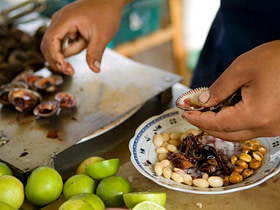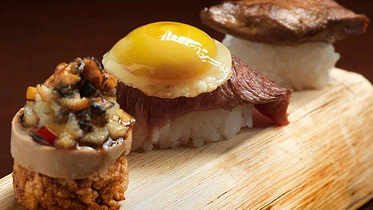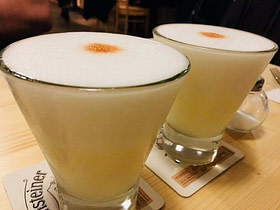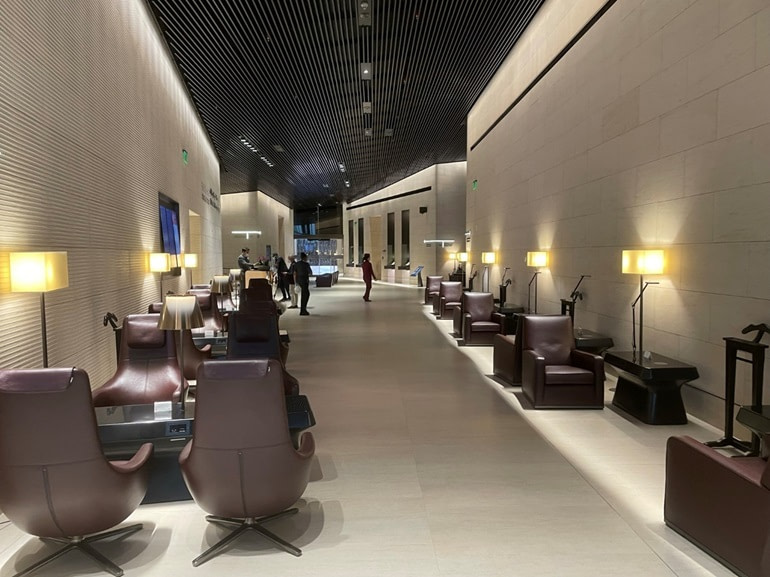Sure, when you go to Peru, you wanna get your spiritual on. Machu Picchu is an utterly amazing and unforgettable experience.
But there’s more to Peru than Incan ruins and bitch-slapping each other over an alpaca sweater sale bin. Lima – the country’s capital – has a stellar foodie scene; probably the best in South America and one of the best in the world. There are numerous Lima restaurants that appear on the World’s 50 Best Restaurants lists. And with a favorable exchange rate for Americans, these world-class restaurants become less Iike a mortgage payment and more like a really expensive Applebee’s.
The foodie scene here is aided not only by Michelin-starred chefs, but by the variety of wonderful produce grown in this nosebleed nirvana (Peru boasts the highest tropical mountain region in the world): items like kiwicha (a superfood-type seed that can be popped like popcorn, rolled into flour or sprinkled on salads), quinoa, and over 4,000 varieties of potatoes. (Hey, you’re on vacation. Eat a carb.) Not to mention the artful presentation of foods not common to American palates, like guinea pig and beef hearts.
Fortunately, there are memorable dining experiences to be had at both ends of your wallet. Locally-loved restaurants like Isolina (in the Barranca neighborhood) and Sonia (in the Chorrillos neighborhood) create inexpensive, hearty and beautifully prepared dishes of meat and seafood that taste like your mother made them – if she was a fabulous Peruvian chef. Think seafood soup with langostinos, or estofados (a beef stew).
If you don’t mind denting your wallet a bit, there are unforgettable culinary masterpieces to be had. The dishes at restaurants like Central (ranked #4 globally), Maido and Osaka are not only extraordinary, but completely unique to Peru.
Central is a molecular gastronomy haven (a style of presentation made famous in the U.S. by Jose Andres), the brainchild of celebrity chef Virgilio Martinez Veliz. His ultra-contemporary creations are structured around native ingredients chosen from different altitudes within Peru. Make a reservation; don’t embarrass yourself by attempting to get a walk-in table. They rarely exist.
Maido and Osaka are gorgeous purveyors of a style of fusion cuisine known as Nikkei; that is, Japanese-Peruvian. (There was a wave of Japanese immigration to Peru in the late 19th and early 20th century.)
Osaka also includes a top-flight sushi bar, and its success has spawned sister restaurants in São Paulo and Buenos Aires, so if you don’t get to this one, you don’t have to gnash your teeth in despair (unless you just like being dramatic. No judgments here).
And then there are the regional specialties that you can find across Peru, of which three stand out:
Ceviche is one of the most common traditional dishes, and frequently one of the best (heavily influenced by the Japanese Peruvians). Typically, it’s whitefish marinated in fresh lime and chiles, served with a type of large-kernel white Andrean corn or sweet potato on the side; but you’ll find it offered with many variations, like octopus, squid, shrimp, etc. Try it everywhere you go.
Cuy sounds quite innocent until you discover what it is – guinea pig, those adorable little rodents that make sweet pets (I had them as a child, and thus, have never enjoyed cuy, nor will anyone around me if they know what’s good for them). But I’ve been told that, baked or barbequed on a spit, it has a pleasantly gamy taste, like rabbit or wild fowl.
Pisco is the local liqueur – a brandy produced from eight varieties of Pisco grapes. It’s been a part of Peruvian culture for more than four centuries. You can enjoy it straight up, or as the base for a cocktail like the popular Pisco Sour (noted for its great mouth feel, since it uses egg whites to create a frothy cocktail).
For those who like to do a deep dive while they dine, there are also foodie tours available, from tour operators like Haku Tours or Aracari, where you can learn about (and sometimes prepare) the regional specialities while you eat them.
So, if you’re heading to Peru for one of Brand g’s Amazon River Cruise and Machu Picchu vacations, or considering a trip on your own, make sure you allow time to sample the incredible gastronomy on display in Lima. You might think it’s just the higher altitude making you lightheaded, but in reality, it’s the foodie fabulosity.Lima









